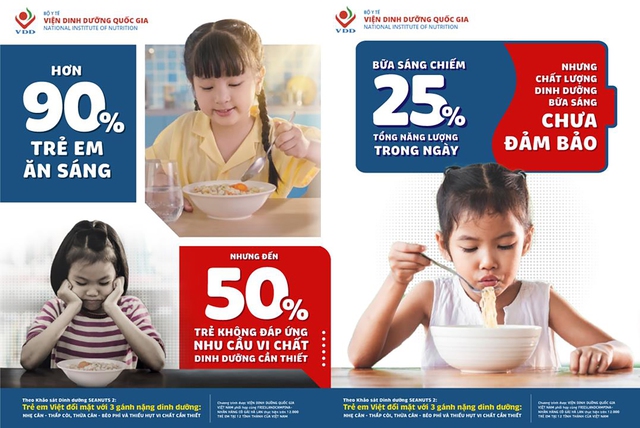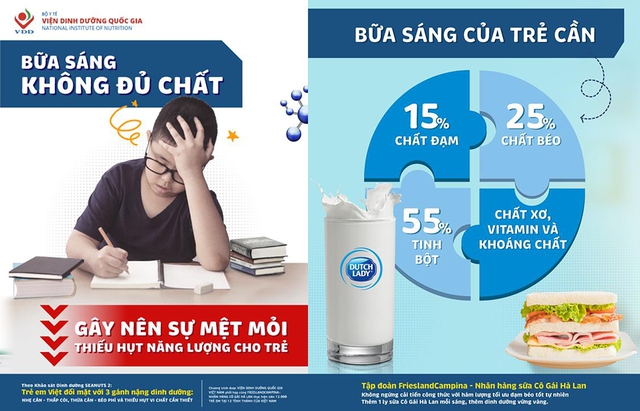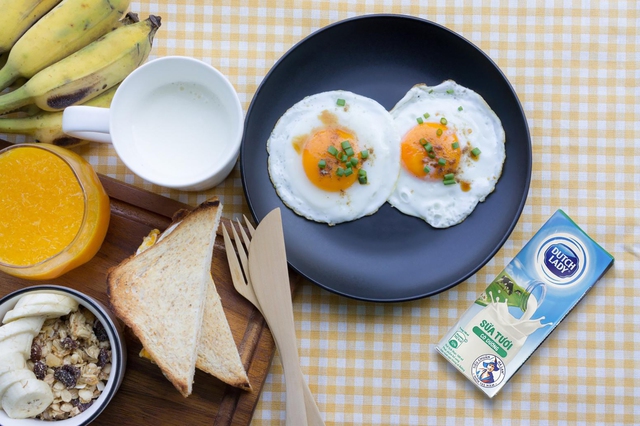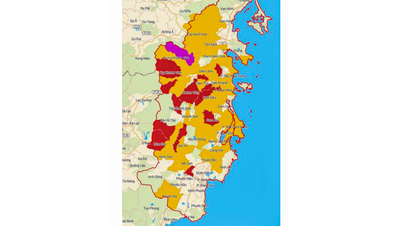After the Southeast Asian Nutrition Survey (SEANUTS II), the National Institute of Nutrition announced many common nutritional situations in Vietnamese children, in which many concerns about breakfast were discovered. From this reality, experts shared for the first time the story of 5 current breakfast situations, encouraging parents to change their habits to build a more solid nutritional foundation for their children.

The story opens with the 90:50 paradox, shedding light on breakfast situations that mothers often overlook and revealing a "happy" ending with solutions from experts.
90:50 situation from an expert's perspective
After years of preparing breakfast for their children, mothers will be surprised when they first learn about the 90:50 paradox, wondering whether their children are in the group of "more than 90% of children eat breakfast but 50% do not meet the necessary micronutrient needs". This situation is mentioned first by experts because it leads to many physical, psychological and academic disadvantages for children.
Dr. Nguyen Thu Ha, Department of Micronutrients (National Institute of Nutrition) said that a nutritious breakfast brings 4 great benefits: energy to start a happy and joyful mood, nutrition for the brain to learn better, healthy body and long-term resistance. However, in reality, up to 50% of children do not fully enjoy these 4 benefits. The main reason comes from the mother's habit of preferring starchy breakfast dishes, as well as the poor eating ability of picky children.

Accounting for up to 25% of the day's energy, breakfast is often prepared more hastily than lunch and dinner, resulting in 50% of children not getting enough micronutrients.
Solutions for a nutritious breakfast
In addition to the difficulty of enjoying all 4 benefits of breakfast, a lack of nutrition in breakfast also causes many disadvantages. The most obvious manifestation is fatigue and lack of energy in children in the first half of the day. Dr. Nguyen Thu Ha also pointed out the more worrying thing when children are lethargic, often less active, crave food to compensate for dinner, silently causing weight gain, obesity and cardiovascular disorders.
To prevent the above situation, the National Institute of Nutrition suggests that mothers cleverly harmonize a nutritious diet with limited time each morning. Mothers can prepare simple dishes, but give children a variety of foods to supplement the 4 groups of nutrients, especially protein (meat, fish, eggs, milk...). Children have a protein need twice as high as adults to build cells, bones, brain, immunity... in the fastest growing stage of life.

Four hours of morning study opens up a world of knowledge, but children may not have enough energy and lack the "growth factor" protein to fully exploit their potential.
Milk - Children's close friend
Among protein-rich foods, milk is a valuable and easily absorbed source of protein, but more than 40% of children drink less than 4 small servings of milk per week. This amount is very low compared to the recommendation of 2-3 servings of milk per day depending on age of the World Health Organization (WHO), the American Academy of Pediatrics (AAP), the National Institute of Nutrition (NIN)... This situation opens up another practical solution: let children eat moderate amounts and drink an extra glass of fresh milk.

Breakfast needs to supplement 15% protein, prioritizing easily absorbed protein in milk, but many mothers skip this food in breakfast.
Contributing to changing the above situation, Dutch Lady has improved fresh milk, optimizing the content of natural good fat and protein to practically support parents every breakfast. Still the flavor that pleases "little diners", but the nutritional value has been increased to 5.8g of protein in each small milk box, meeting 23% of children's daily protein needs.

The high nutritional value inside each box of Dutch Lady milk helps children increase learning efficiency and develop better physical health.
Dutch Lady Milk with its refreshing taste and easy-to-drink liquid form has always been a favorite food for children. Not only is it a close friend of children, milk is also a companion that helps mothers relieve the pressure of having to elaborately prepare food every morning.

Just a simple breakfast to please your baby, you can still rest assured because Dutch Lady fresh milk provides enough micronutrients to meet your needs.
Source link







![[Photo] Cat Ba - Green island paradise](/_next/image?url=https%3A%2F%2Fvphoto.vietnam.vn%2Fthumb%2F1200x675%2Fvietnam%2Fresource%2FIMAGE%2F2025%2F12%2F04%2F1764821844074_ndo_br_1-dcbthienduongxanh638-jpg.webp&w=3840&q=75)





















































![[VIMC 40 days of lightning speed] Hai Phong Port determined to break through, reaching the target of 2 million TEUs by 2025](https://vphoto.vietnam.vn/thumb/402x226/vietnam/resource/IMAGE/2025/12/04/1764816441820_chp_4-12-25.jpeg)























































Comment (0)